Dear friends,
It’s only as you grow older and go through the trials and tribulations of life do you realize what truly is special—those experiences of gold that subliminally wrap around your being like the whorls on a tree trunk, stamping you forever. My inner whorls were largely shaped growing up in the unique Zoroastrian community of Dadar Parsi Colony in central Mumbai, a leafy wide-road enclave primarily consisting of Zoroastrian residents. I was of course, born Hindu, but Parsi colony—originally meant mainly for Zoroastrians—saw people of other faiths like my grandfather settle in as well in the early 1900s.
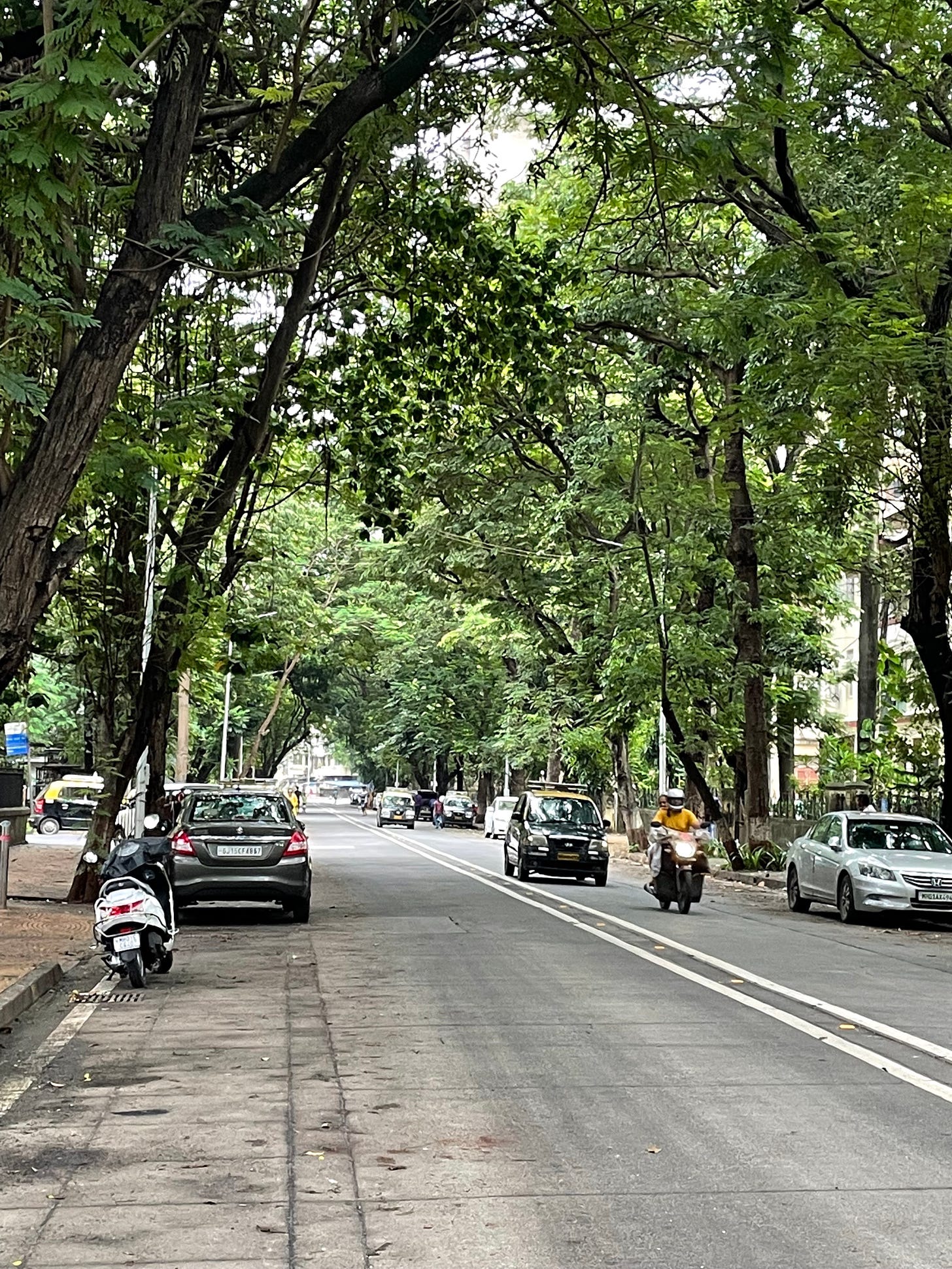
A little known queenly tidbit!
Freddie Mercury, born Farrokh Bulsara, the British band Queen’s lead singer-songwriter and a Zoroastrian by birth, also spent his childhood in Mumbai’s Dadar Parsi Colony, at his relatives’ home located around three lanes from where I lived.
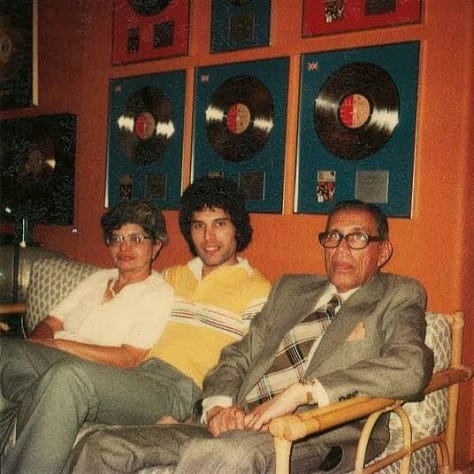
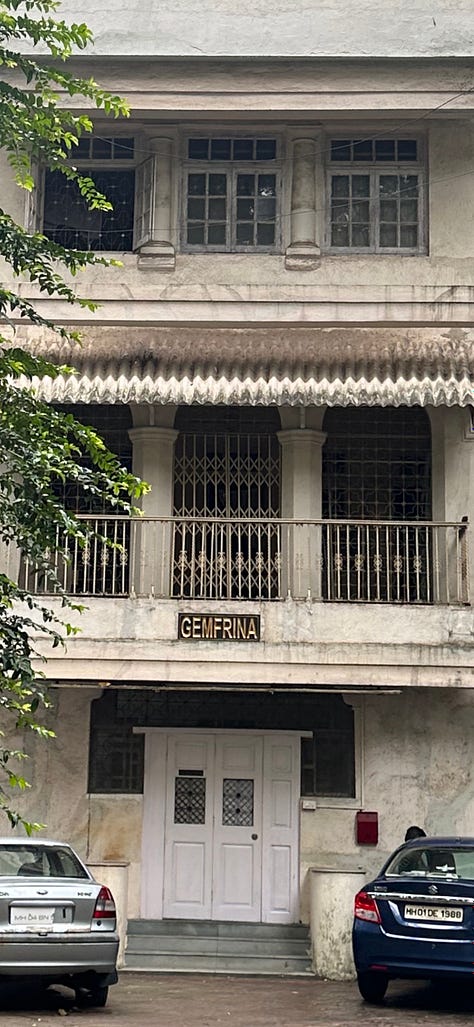
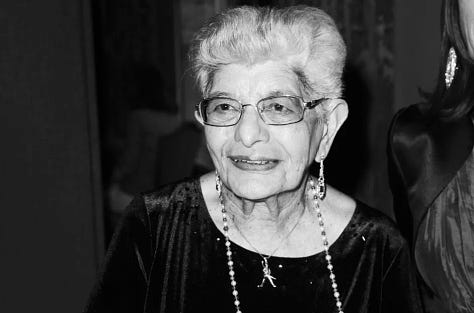
Of faith and acceptance
One couldn’t help imbibe an appreciation for diversity growing up in Dadar Parsi Colony. After all, we had both a 93-year-old agiary or a fire temple for Zoroastrians and a 400-year old Hindu temple within walking distance of each other.
My school (get ready for a mouthful!) the J.B. Vachha High School for Parsi Girls and the Cowasjee Jehangir Infant and Primary School that turns 100 this year, was founded by Parsis, but we enjoyed learning from (strict!) devout Catholics, Hindus, and Parsis teachers, and it was common for us girls to recite verses from the Zoroastrian Avesta in mark of honor for the deceased, no matter what our faith. In fact, I learned verses from the Avesta 30 years prior to learning my first verse of the Bhagavad Gita 10,000 miles from my birth home, in Washington, DC.
It didn’t matter, since we never wore our religion on our sleeve. It just was, and still is, no questions asked. Everyone prayed to their respective gods and to each other’s gods, and that was just fine.
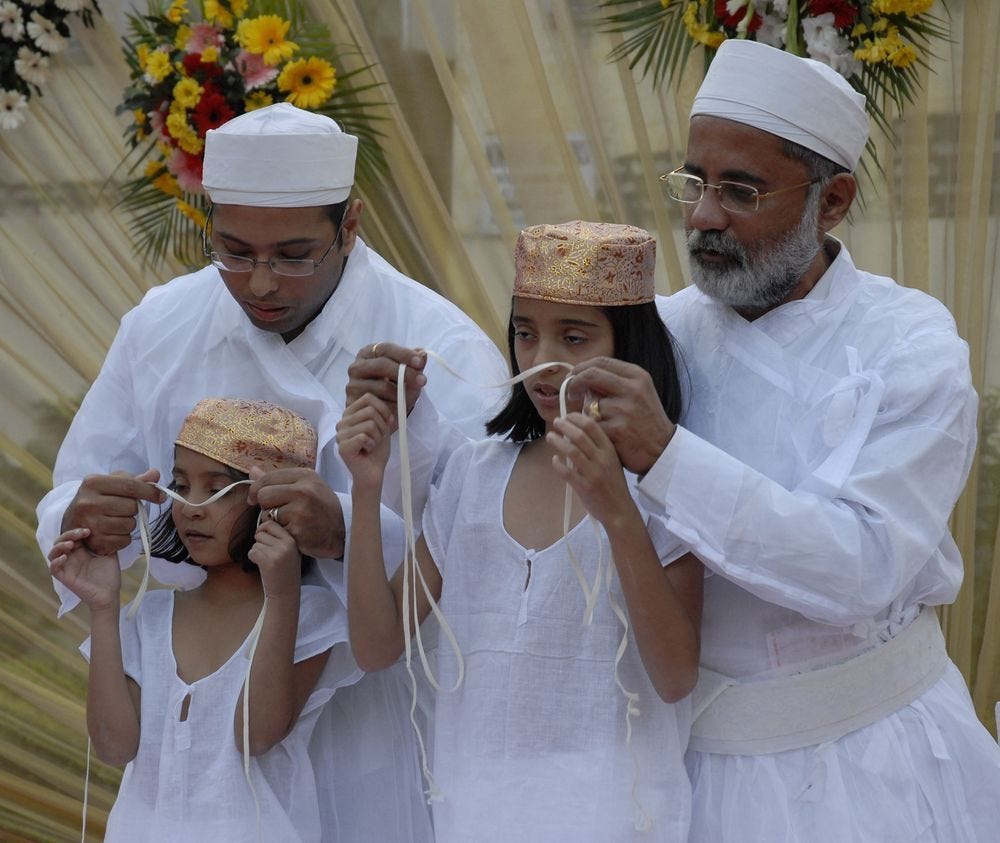
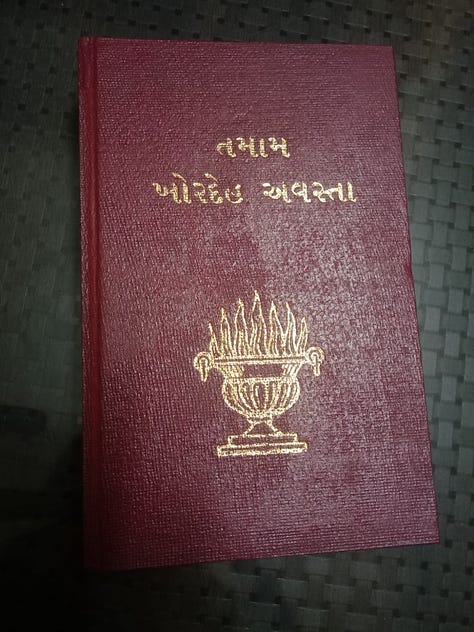
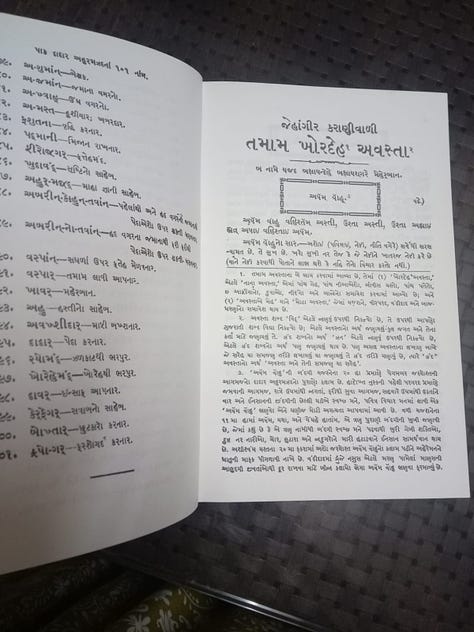
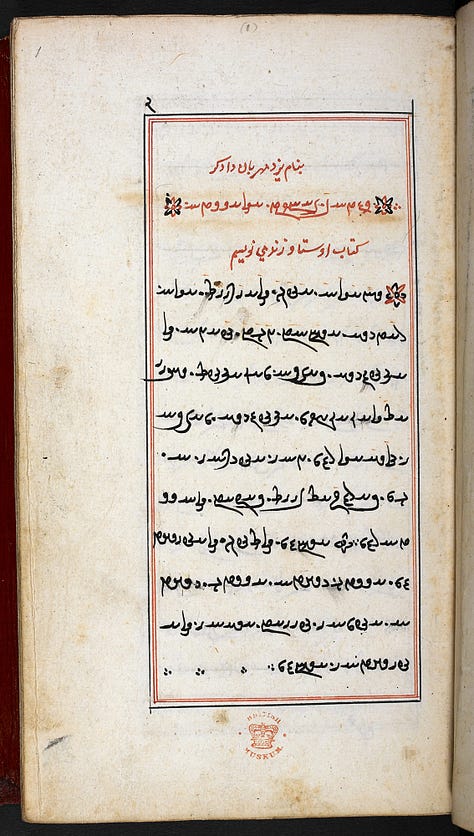
Born out of plague, and thanks to Mancherji Joshi
Dadar Parsi Colony has its origins in the 1896 Bubonic plague of Mumbai. It was birthed as a safe low-lying marshland community to combat the spread of the disease, caused by poor standards of living and inadequate sewage systems. The British set up a Bombay Improvement Trust to manage the area where the disease was rampant—near the cotton mills where the working class lived, and away from the elite neighborhood of what is now South Mumbai, where the British lived.
At the time, an enterprising civil engineer from modern day Karachi, Pakistan, named Mr. Mancherji Joshi, sold the British colonial authorities into his vision of setting aside 103 plots of land for a community uniquely focused on Zoroastrians, in Dadar, away from the congestion of South Mumbai. He presented a blueprint of his vision for the neighborhood, including an agiary or a fire temple, a school, a seminary or a Parsi madrasa, and a wedding hall, all of which came to fruition. It is believed that Mancherji Joshi planned every last detail of his Dadar Parsi Colony, including the type of flowers and trees to be planted. Thanks to his efforts and advocacy, Joshi was granted a 999-year lease on the plots, and voilà, came into being, Dadar Parsi Colony.
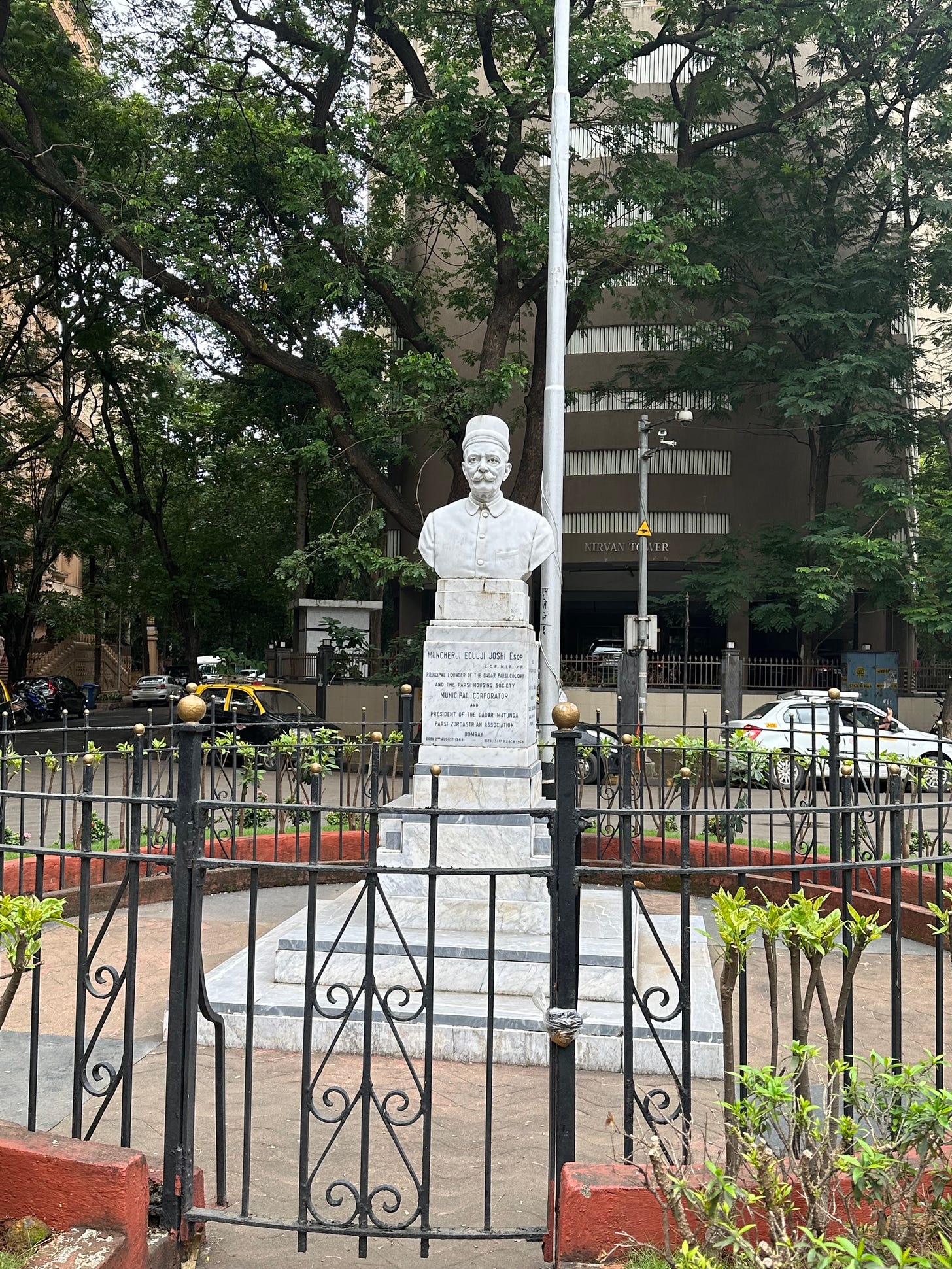
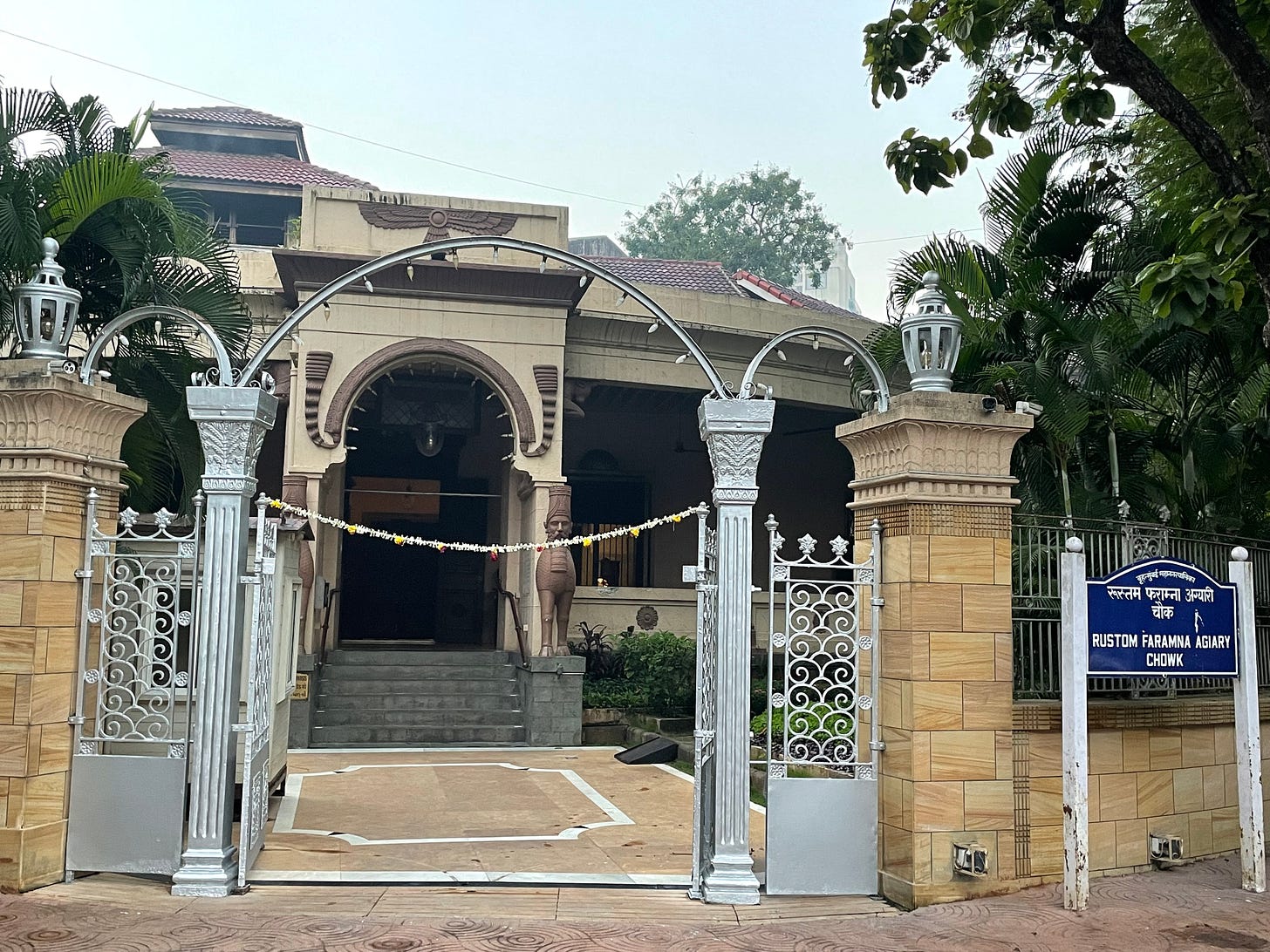
So, who are the Zoroastrians?
The Zoroastrians are a small ethno-religious group that fled to India from Persia or current day Iran 1,300 years back to avoid religious persecution after the Arab conquest of the Persian empire. The word Parsi, derived from the Persian language, is local speak for people of Zoroastrian faith in India. Legend has it that the Zoroastrians landed in the port of Sanjan, around 200 kilometers from Mumbai on the Western coast of India.
When the Zoroastrians requested asylum, the local king, Jadi Rana, showed them a bowl of milk filled to the brim to signify that his kingdom was already full and could not accept refugees. In response, a Zoroastrian priest added a pinch of sugar to the milk, indicating that they would not proselytize, but assimilate into the culture just like sugar dissolving in the milk, making the society’s fabric sweeter.
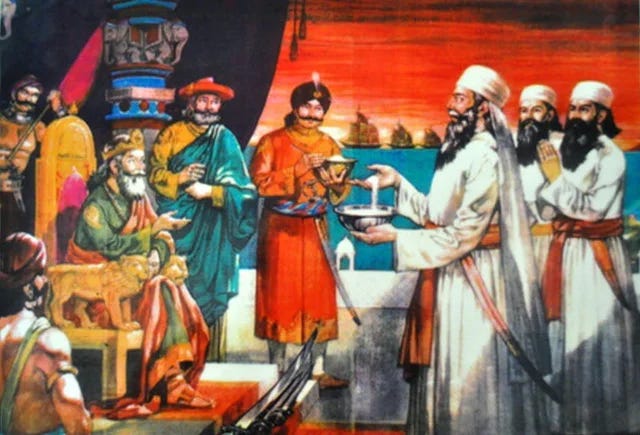
Zoroastrianism is one of the world’s oldest monotheistic religion that follows the teachings of the prophet Zoroaster and worships the God Ahura Mazda. Zoroastrians worship fire at an agiary or a fire temple and each fire temple contains an altar with a flame that burns continuously and is never extinguished.
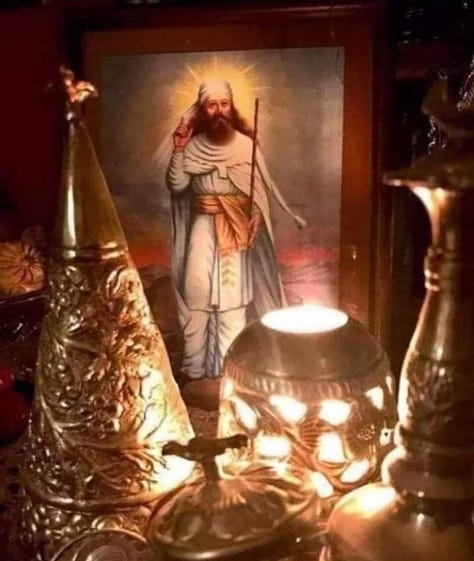
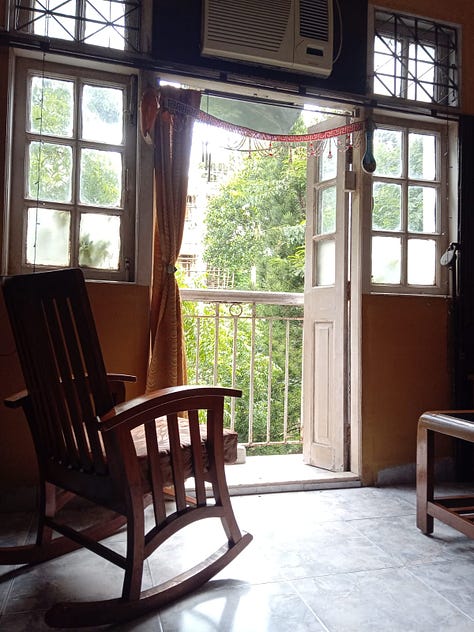
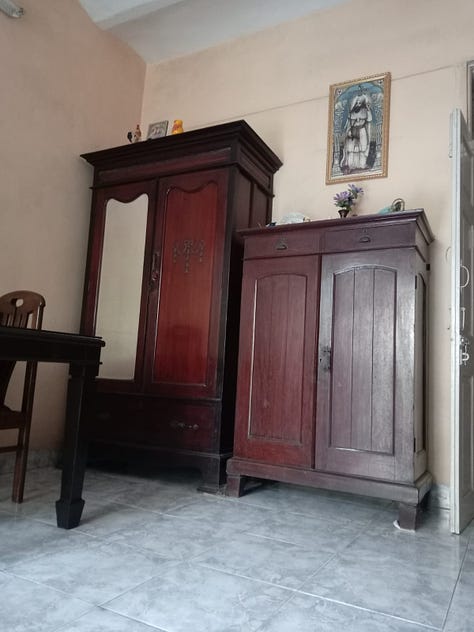
A curiously ancient and modern feel
Strolling through Dadar Parsi Colony feels like leafing through pages of ancient history. Only here will you find rare Persian-inspired street names like Jam-e-Jamshed—the legendary magical goblet of king Jamshed in which he saw whatever he wished, and also incidentally the name of a weekly newspaper founded in 1832 and still in publication. You’ll walk along Firdausi Road, named after the namesake Persian poet. The heritage architecture of DPC’s original buildings is stunning and often boasts of the winged figure of Asho Farohar or Asho Faravahar, a bearded man standing on a pair of wings with one hand reaching forward on the outside front, signifying good thoughts, good words and good deeds, a key teaching of Zoroastrianism.
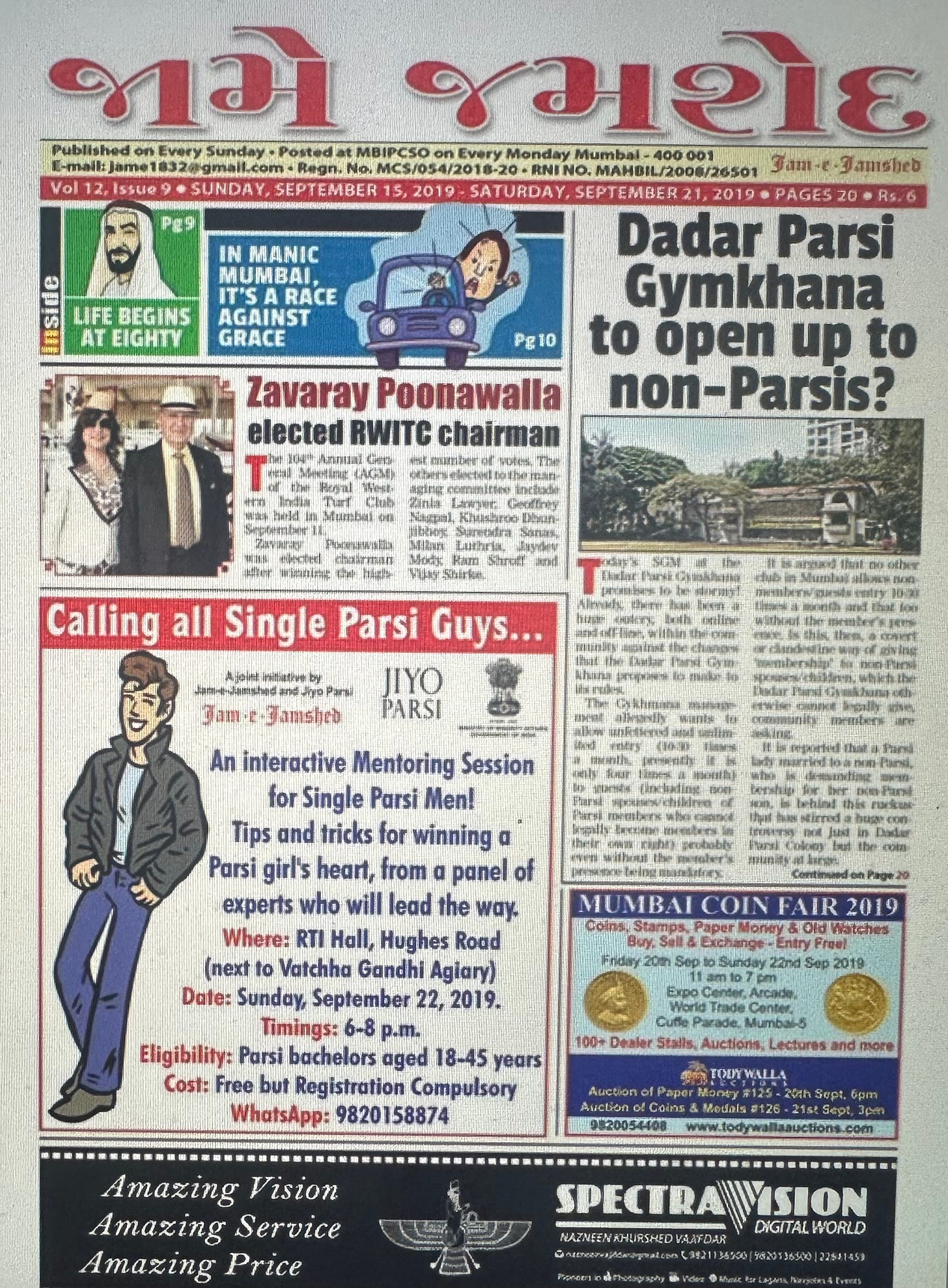
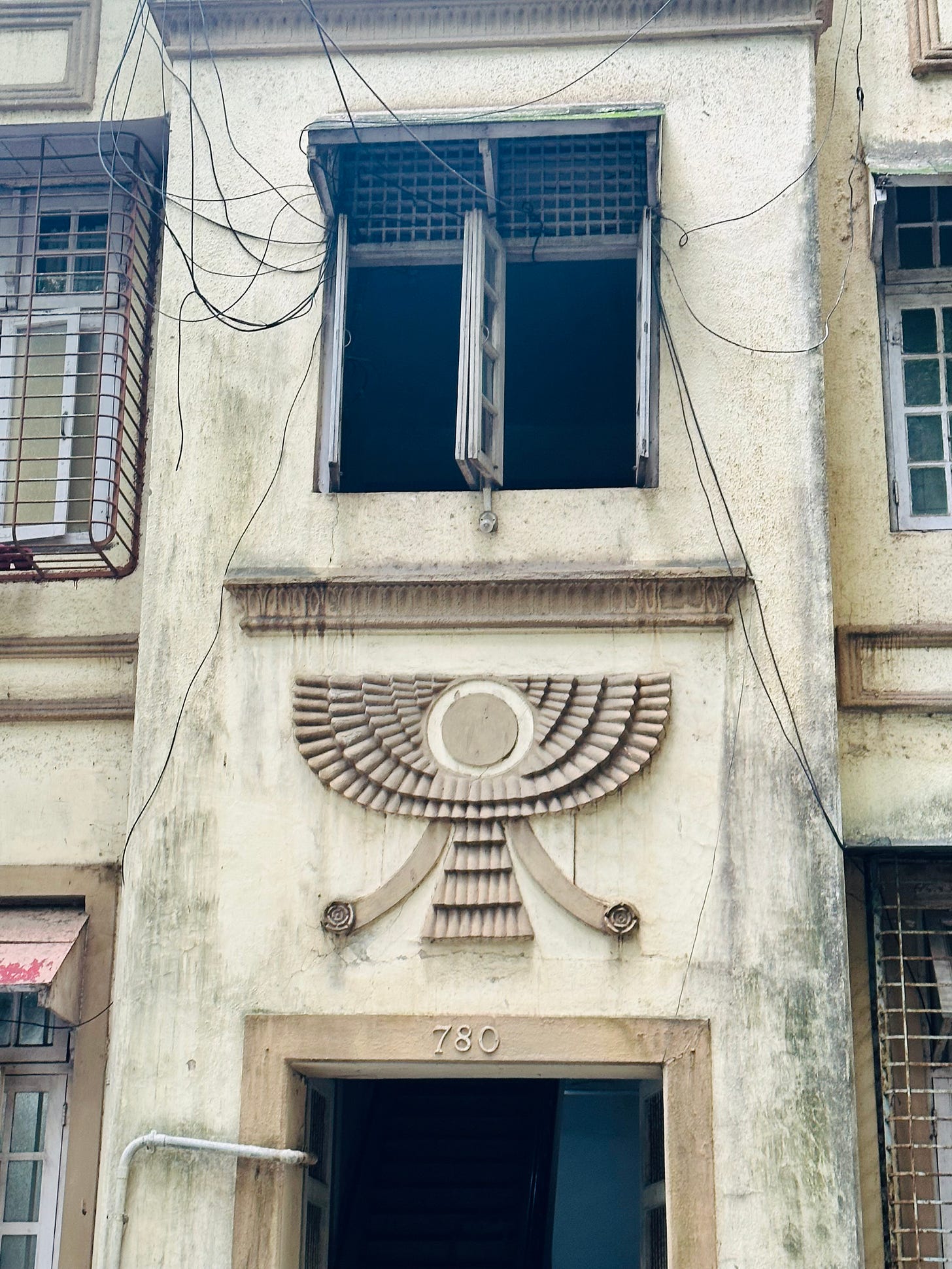
A relatively new architectural marvel to arrive in DPC—albeit inspired by the old Achaemenian style of architecture—is the impressive 21-storied building called Della Tower designed by social entrepreneur, Jimmy Mistry. Aptly nicknamed, “Persepolis of Parsi Colony”, its design is inspired by Persian architecture with stunning Avestan prayers and massive reliefs of Prophet Zarathustra adorning the building. At night, sophisticated floodlights shroud it in the mystery of antiquity, just like the Parthenon standing in all its glory on the Athenian Acropolis.
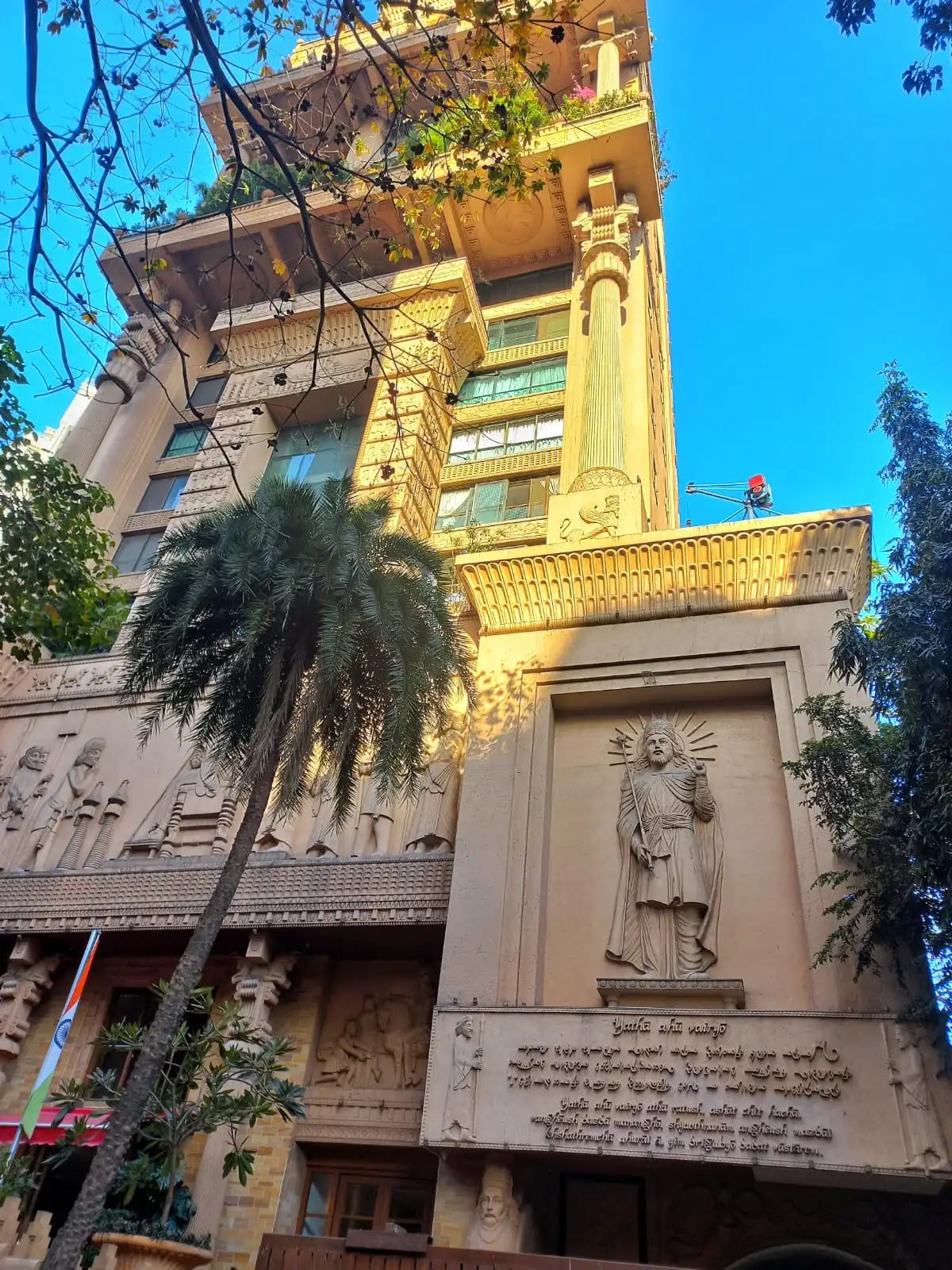
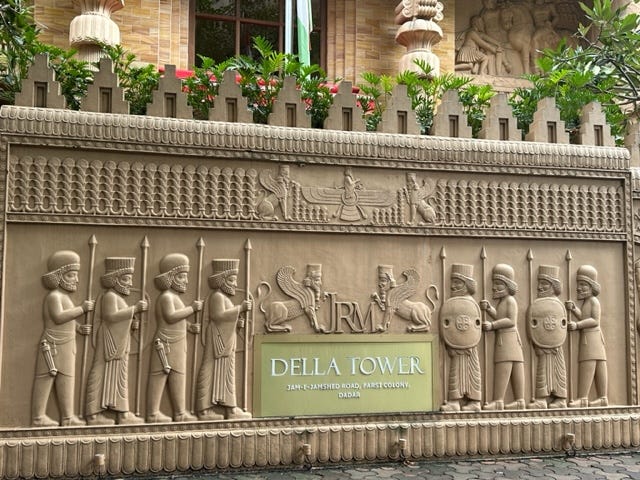
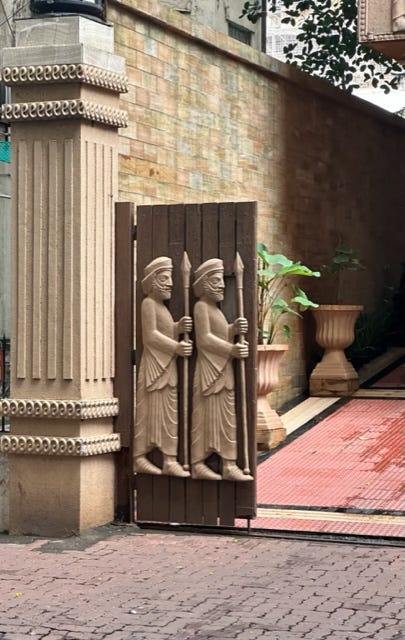
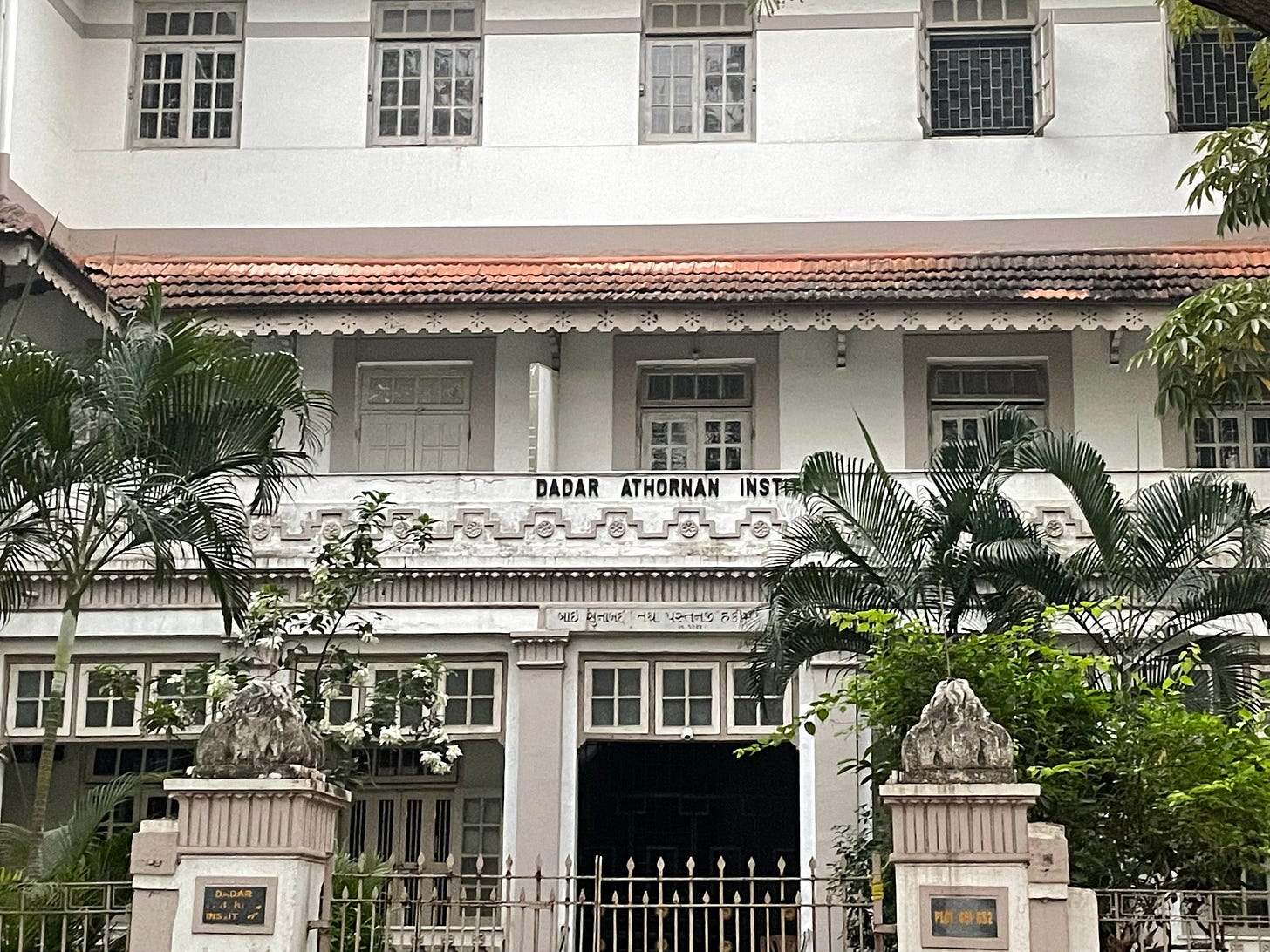
Mr. Ramiyar Karanjia, the head priest at the Arthonan Institute, aptly captures the spirit of DPC:
“The Dadar Parsi Colony is a place that has maintained a balance in the changing world—it is an open colony, it has maintained its community richness as well as maintained a cosmopolitan outlook.”Of quirky Zoroastrian names—Readymoney!
It’s no secret that Zoroastrians are known for their quirky last names, inspired by their family’s trade (wallah). Like Sodabottleopenerwallah, or a family in the business of bottles. Or, daruwallah or the dealer of daru or liquor. Engineer and doctor are also two common Parsi last names, and Mr. Engineer and Mrs. Doctor were my French and Philosophy teachers respectively, and clearly, they did not follow the professions of their ancestors!
Arguably one of the most interesting names, Readymoney, is the nickname given to Mr. Cawasji Jehangir (yes, of my elementary school’s fame), one of the most successful opium traders in the 1600s under the British East India Company. Mr. Cawasji was the go-to person for the British in case money was required for any public project, hence earning him the sobriquet, Readymoney.
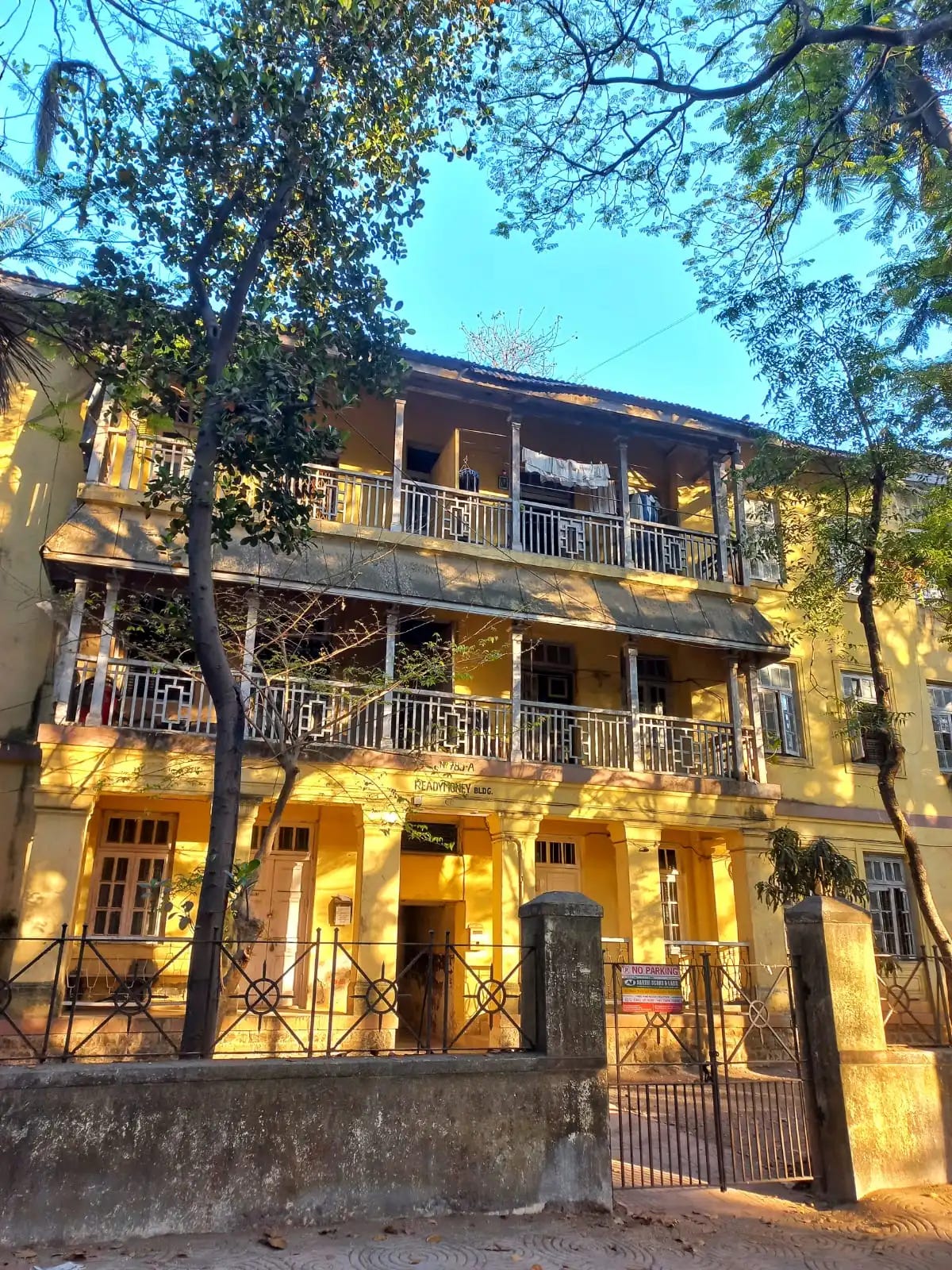
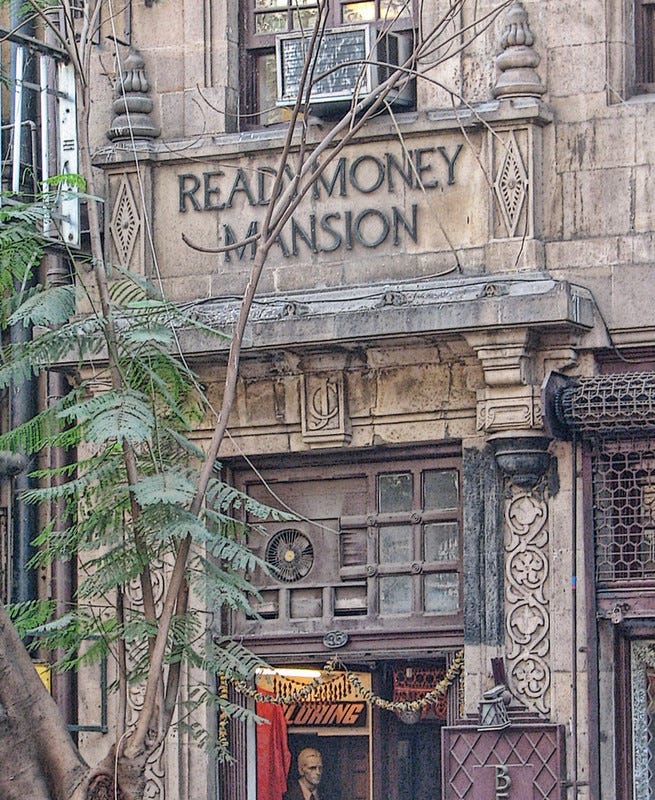
Why care about Dadar Parsi Colony?
DPC ain’t no tempest, but it is indeed the stuff that dreams are made on, especially in today’s world which aspires toward the ideals of diversity and inclusion. To me, the most precious gift inherited from growing up in this wonderful community, is its inherent principle of inclusion that came as a given.
It’s a natural, I guess, when a Zoroastrian from Pakistan builds a community inspired by a Persian religion in Hindu-dominated India. The mishmash of civilizations and religions that went into the making of the fabric of Dadar Parsi Colony come to life in its birth story and breathe through its residents.
The plurality of thought and acceptance are what distinguish Dadar Parsi Colony as a modern community with the soul of yesteryears. Then of course, I am biased. What are your first impressions of Dadar Parsi Colony? Did anything surprise you about it? I hope you feel as much love for DPC as I do, and share this post (very) liberally, so more people know about this wonderful community as well as Zoroastrians, now a dwindling community of only around 40,000 people worldwide.
Meaningfully yours,
Anu Prabhala
PS: In case you are in Mumbai, and feel the urge to walk through Dadar Parsi Colony, Kaevan does an amazing job giving a tour of DPC via Khaki tours. Check it out!





Beautifully written article, brightened my day reading this. I want to share a story of the Parsi community's nation building efforts.
A chance meeting between Jamsetji Tata and Swami Vivekananda on board The Empress of India sailing from Yokohoma to Vancouver birthed a dream in Tata's mind - to set up a world-class scientific research institute in India. On his return to India, Jamsetji Tata set aside 14 buildings and 4 landed properties of his for an endowment, the Maharaja of Mysore donated 371 acres of land in the heart of Bengaluru, the British Indian government contributed £2,000 annually for 10 years, and this resulted in the establishment of the Indian Institute of Science
What a wonderfully written piece, Anu!!
It felt like I was on the streets of DPC and getting a tour. Interestingly your post reminded me of Rohinton Mistry, an Indian-Canadian writer who writes about the Parsi way of life in his books, weaving the diversity and intersection of culture and tradition- brilliant!
I loved how you phrased the sentence about praying to your god, and 'that was just fine.' You nailed it in the head- this has to be our shared vision for the future!
Keep on penning these gems!